How to layer lighting – expert tips to create the perfect soft yet practical scheme for every room
Discover how to combine multiple light sources to create practical and welcoming spaces in every room
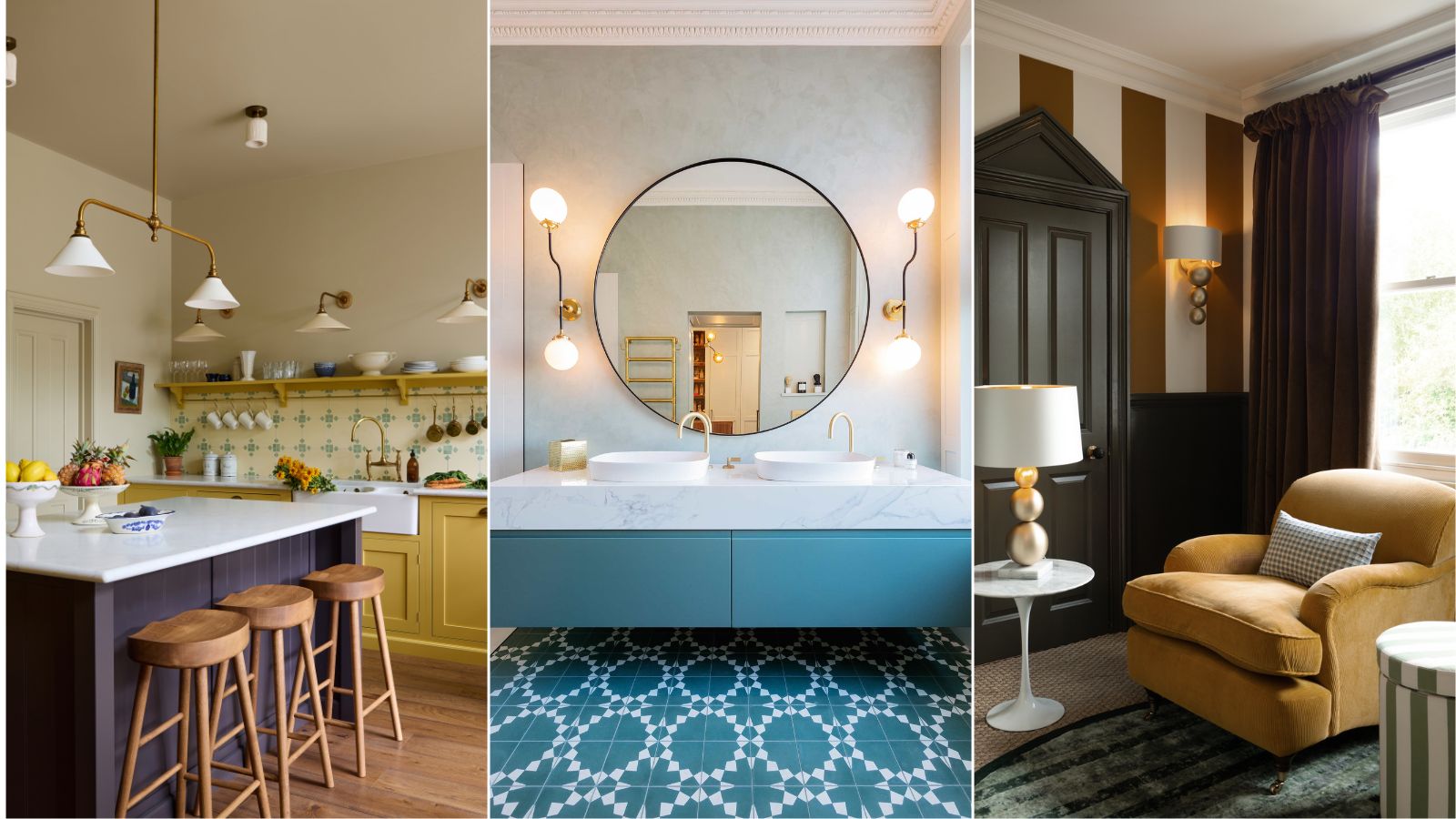

As any interior designer will attest, layered lighting is a crucial part of a successful interior design scheme. Rather than relying on a single light source, having a space with multi-layered lighting specifically designed around the purpose of the room and the mood you want to achieve is essential for a space to create functional, flexible, and comfortable living spaces
‘Lighting is the silent collaborator that sets the tone, enhances functionality, and transforms how we experience a room,' says designer Laura Hammett. 'Well-thought-out lighting ideas are as important as any piece of furniture, with layering different types of light achieving balance, warmth, and depth.’
When it comes to how you layer lighting it can be tricky to know where to start as there are many factors to consider. From practical rooms like kitchens and bathrooms to bedrooms and living rooms, each space will require different lighting solutions depending on its size, function, and the desired ambiance. To learn how best to approach layering lighting we’ve asked the experts for their advice on layering lighting in different rooms along with their general tips to create a soft yet practical scheme.
What is layered lighting?
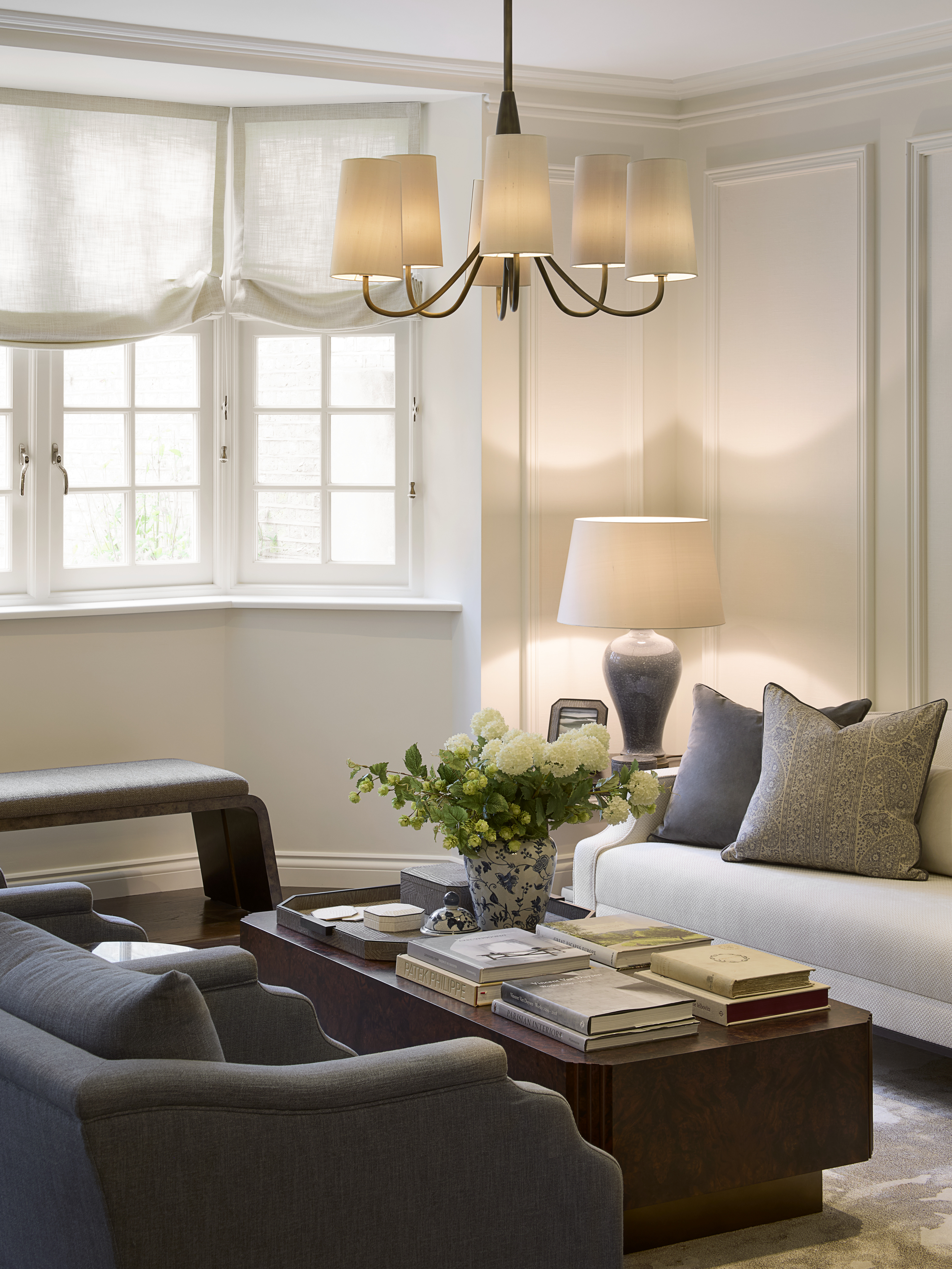
Layered lighting is where multiple light sources are combined within a single room in order to create a space that is both functional, comfortable, and visually pleasing. A successful layered lighting scheme usually combines a mix of the three main lighting types – ambient, task, and accent, each of which serves a different function. Incorporating a variety of fittings and lighting types that can be operated independently allows light to be tailored to fulfill different functions and moods throughout the day.
Ambient – ambient lighting is the primary light source within a room which we use to navigate a space. This type of light is usually provided by a ceiling pendant or downlights and provides the base lighting on which task and accent lighting is layered.
Task – task lighting is focused lighting designed to help us carry out certain tasks. For example, a desk lamp that directs light over a computer, or a pendant light fitting that hangs over a kitchen island used to prepare food, or a floor lamp positioned near a reading nook in a living room.
Accent – accent lighting is light used to highlight certain features within a room. This type of lighting is primarily decorative. Picture lights fall into the category of accent lighting as do wall lights and sconces designed to direct light towards architectural features.
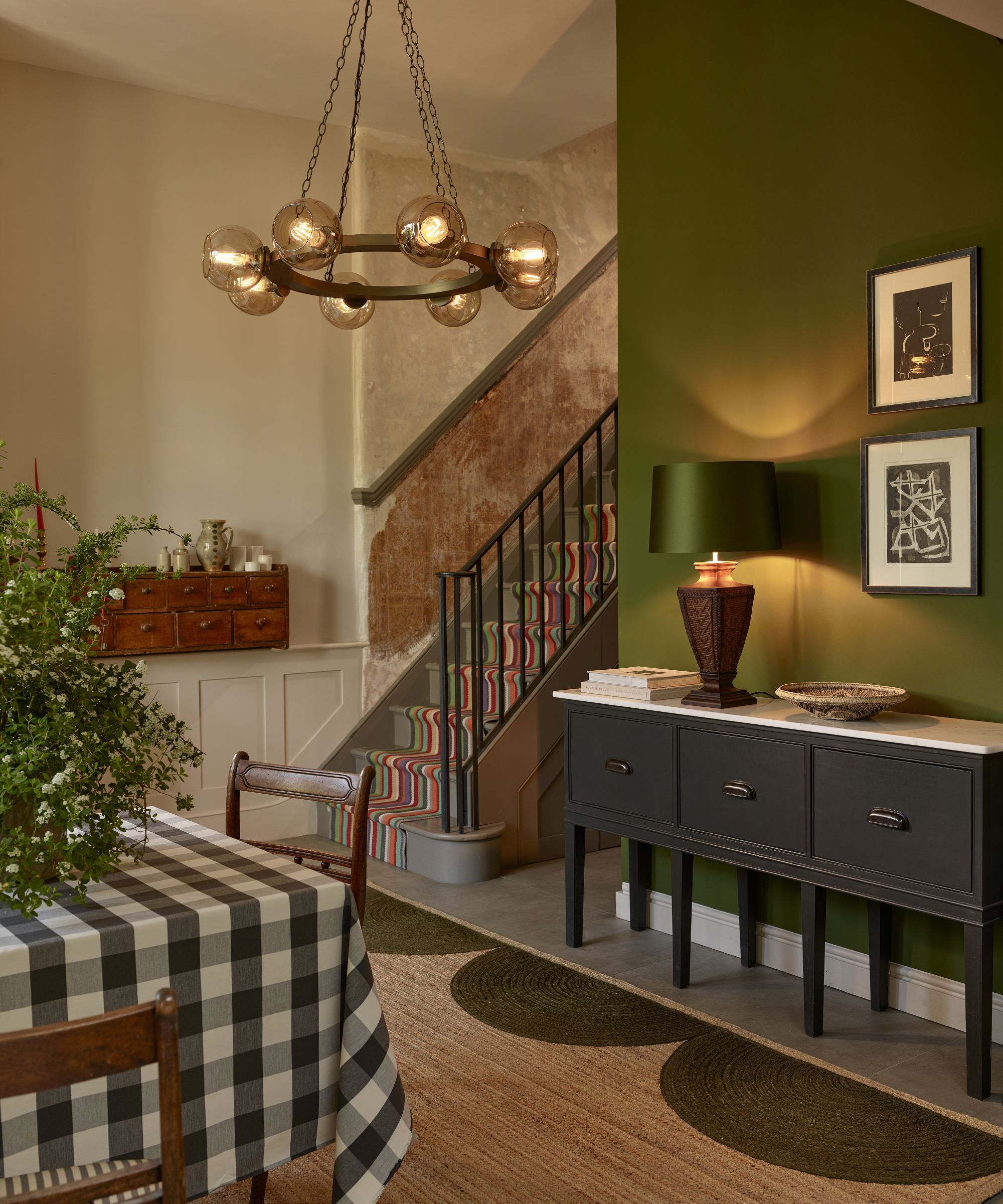
What types of light sources you need and how many you require will vary from room to room and depends on the function, size, and mood you want to create. While all rooms require ambient light, some may require more than others and the type of ambient light needed may vary. For example, a bathroom may need brighter ambient light than a bedroom where we seek more gentle, low-level light. Similarly, practical rooms such as kitchens will inevitably require more task lighting, while living room lighting schemes are likely to rely more on ambient and accent lighting.
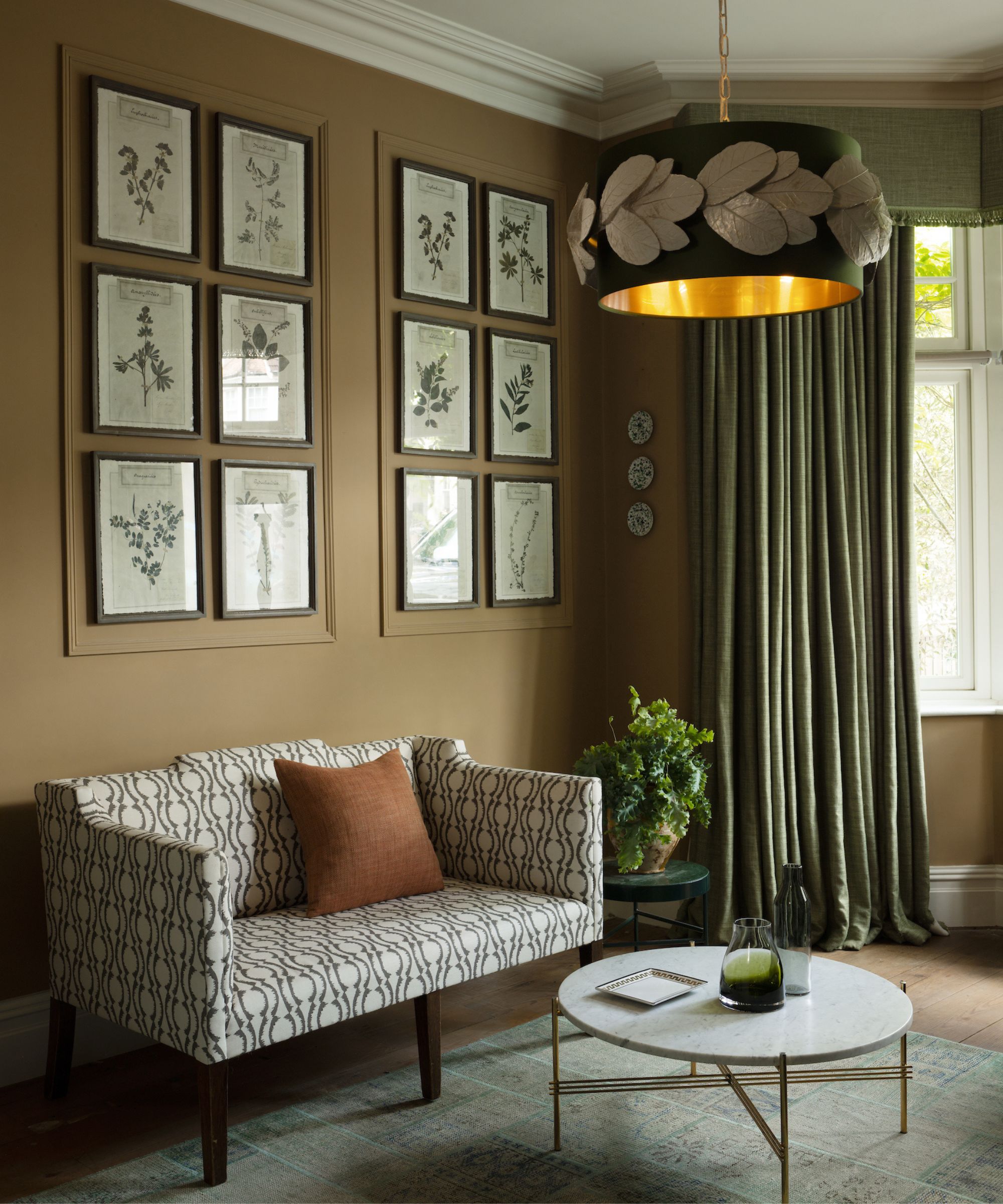
‘A multi-layered approach to lighting offers flexibility within a room via different sources of lighting – from a mix of overhead pieces such as wonderful statement displays to single pendants, from decorative wall lights to interesting or quirky table lamps,’ explains Hollie Moreland, Creative Director David Hunt Lighting.
‘It’s important to consider these many different elements to create the perfect ambiance for each area of your home, such as a cozy spot for reading, a well-lit area for cooking or for working from home, or a relaxing environment for switching off and simply resting. This considered approach to lighting is more important than ever before as our homes have become so multifaceted with the many different elements of daily life unfolding in the same spaces.’
When should you plan layered lighting?
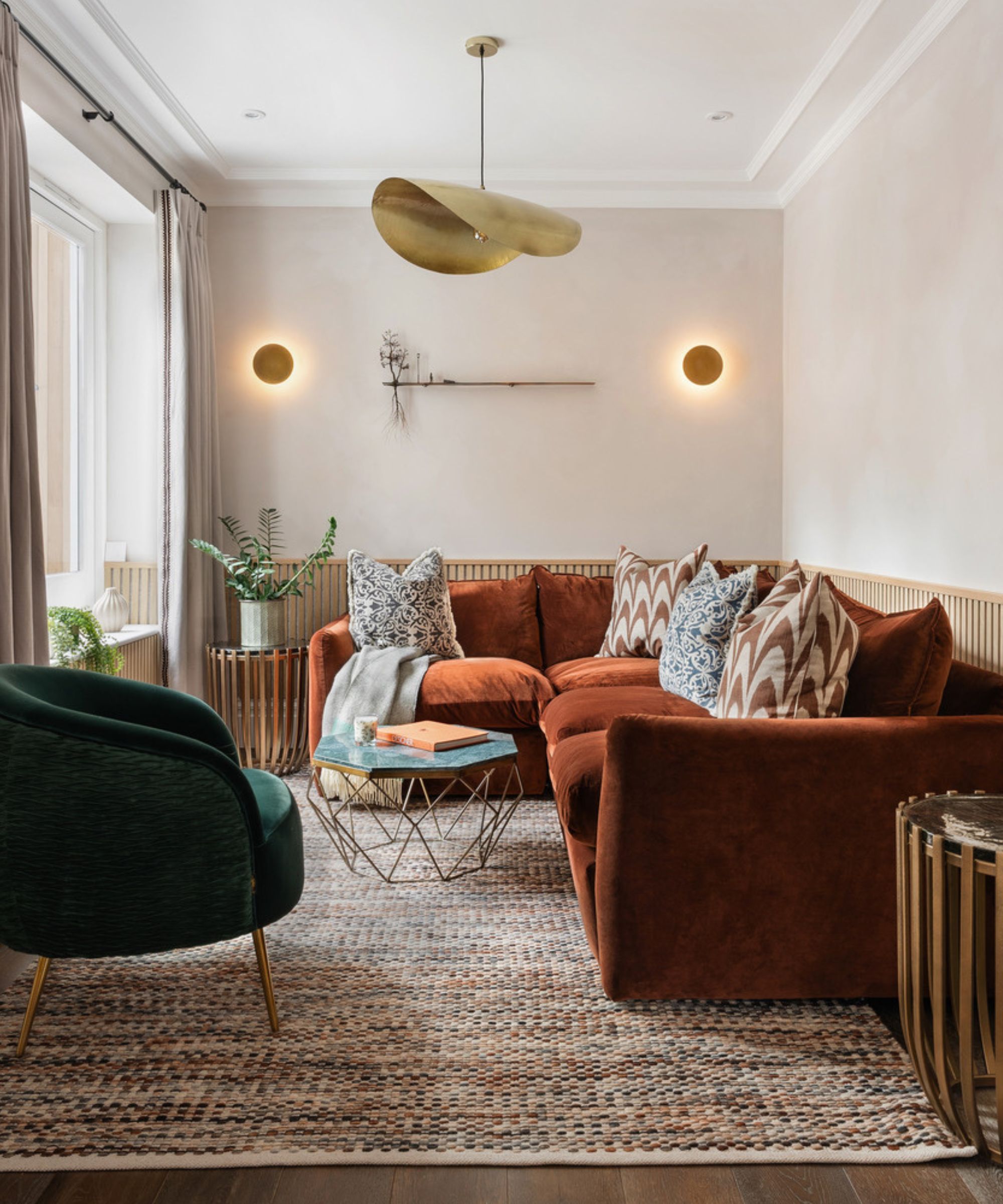
To ensure a space functions to its full potential it's important to plan lighting from the outset rather than to add it in as an afterthought. If you are doing a remodel then ideally you need to plan lighting as part of your room layout as this will allow you to ensure the wiring is fitted correctly.
‘Lighting design should be an integral part of the design process from the very beginning. Early planning allows for seamless integration of lighting into the architecture and ensures optimal results. Collaborating with lighting designers early on will enhance the overall user experience of the space,’ says Luke Thomas, design director of John Cullen Lighting.
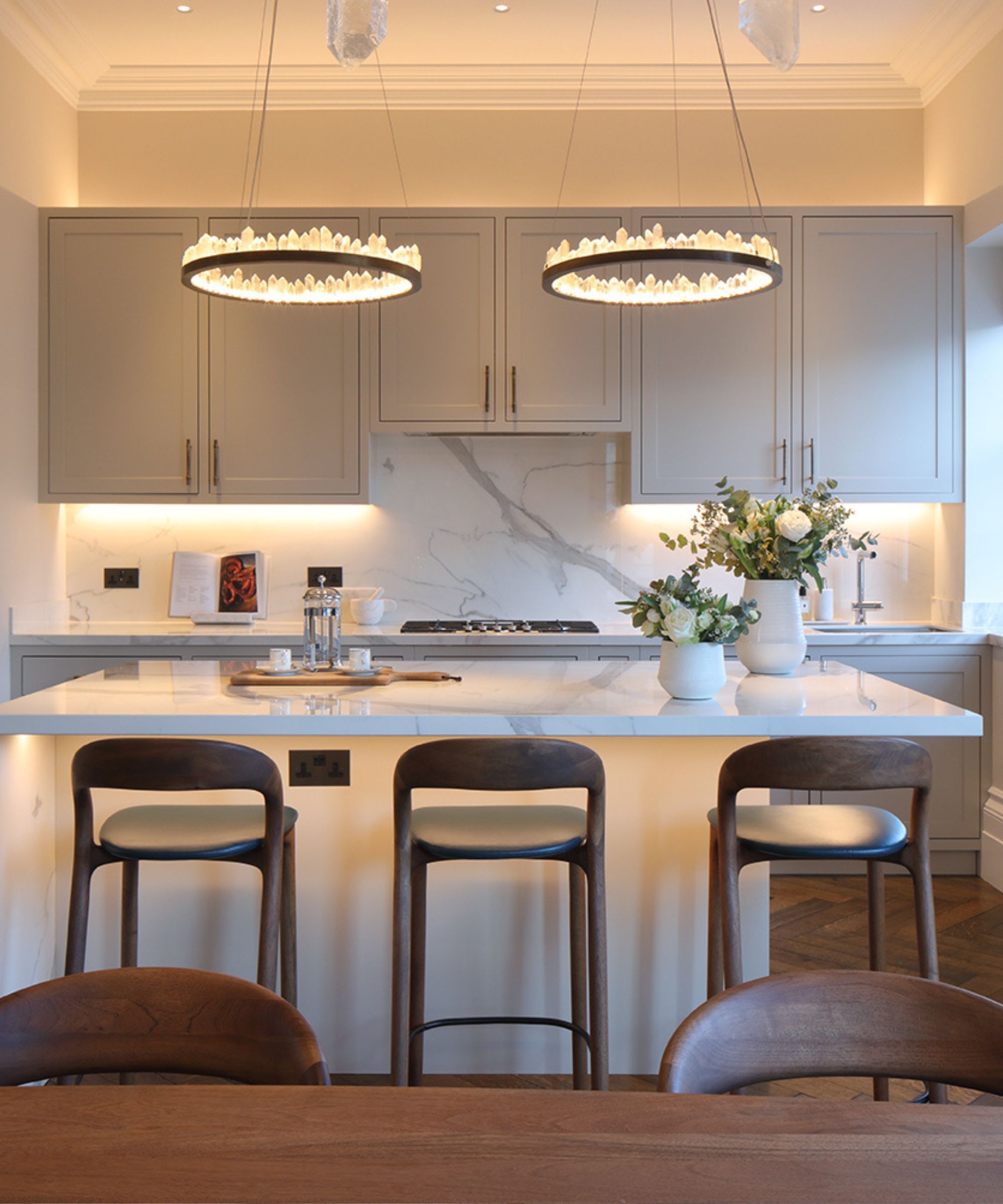
‘We recommend planning your lighting design alongside the furniture layout – this allows you to consider the placement of light sources in order to have light where it’s most needed,’ adds Pia Pelkonen, founder of Pia Design. ‘A successful scheme should incorporate a combination of downlights, pendant lights, wall lights and where possible, recessed strip lighting which can be used to create ambiance or to draw focus to special design features.’
For flexibility over your layered lighting ideally, different types of lighting should be wired on separate electrical circuits. This allows them to be operated independently from one another so that you can tailor the layers of lighting depending on how you want to use the space and time of day. In order to do this planning ahead is essential so clarify this with electricians from the outset.
How to layer lighting in a kitchen
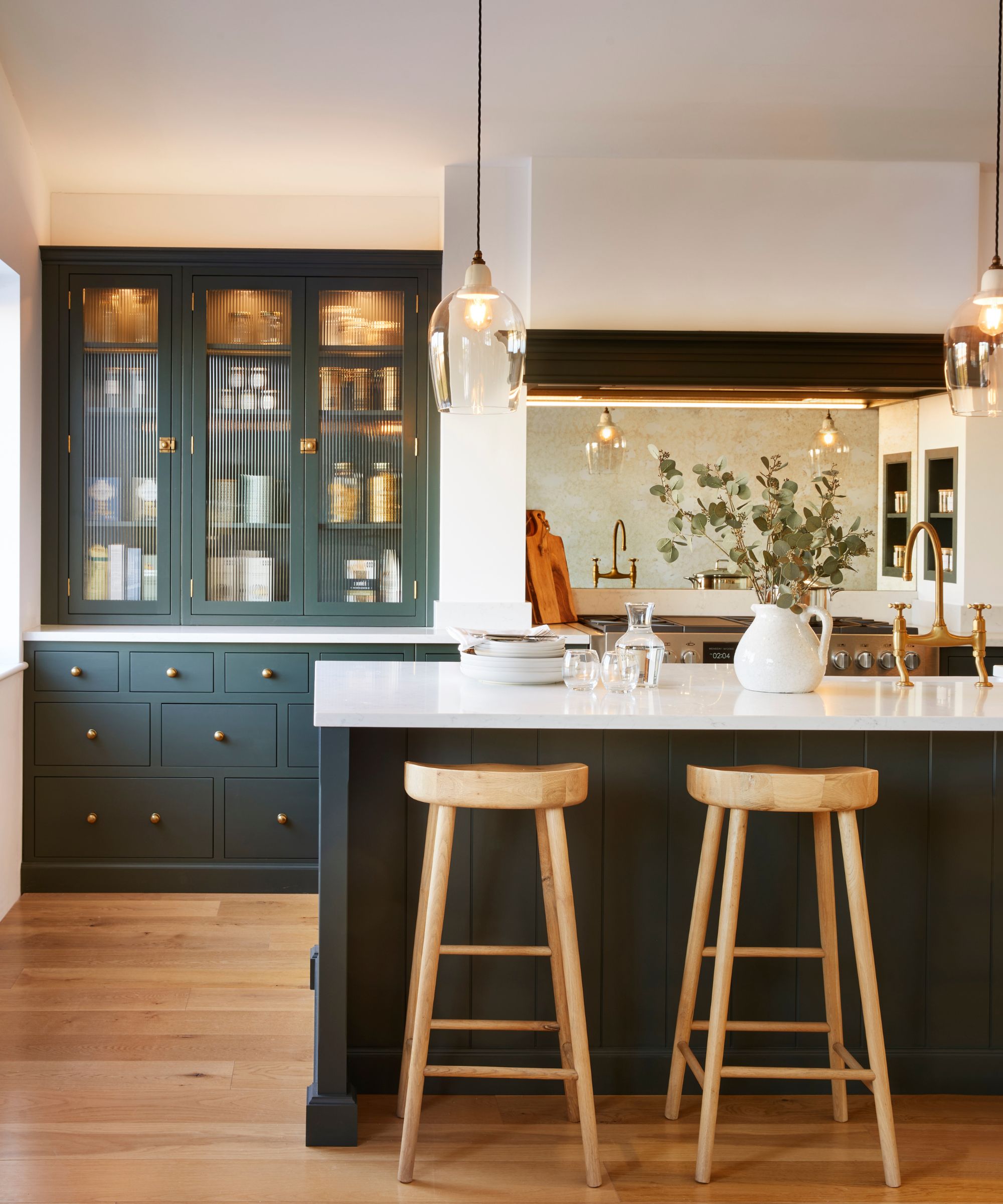
In the past kitchens were once viewed as purely practical spaces with lighting often limited to bright overhead pendants, strips, or spotlights. Of course, having light levels that are practical enough to see what you are doing is important, but as kitchens have evolved into multi-functional living spaces over the years there’s been a shift towards layered kitchen lighting schemes which bring more flexibility to the space.
When planning kitchen lighting, start with your ambient light sources. This may be spotlights recessed into the ceiling pendant lights, or perhaps a combination of both. You can also use adjustable track lighting – these work well in spaces with skylights. In some buildings kitchen ceiling lights may not be an option, for example in some listed properties or due to ceiling construction, in which case wall lights can be used to create ambient light.
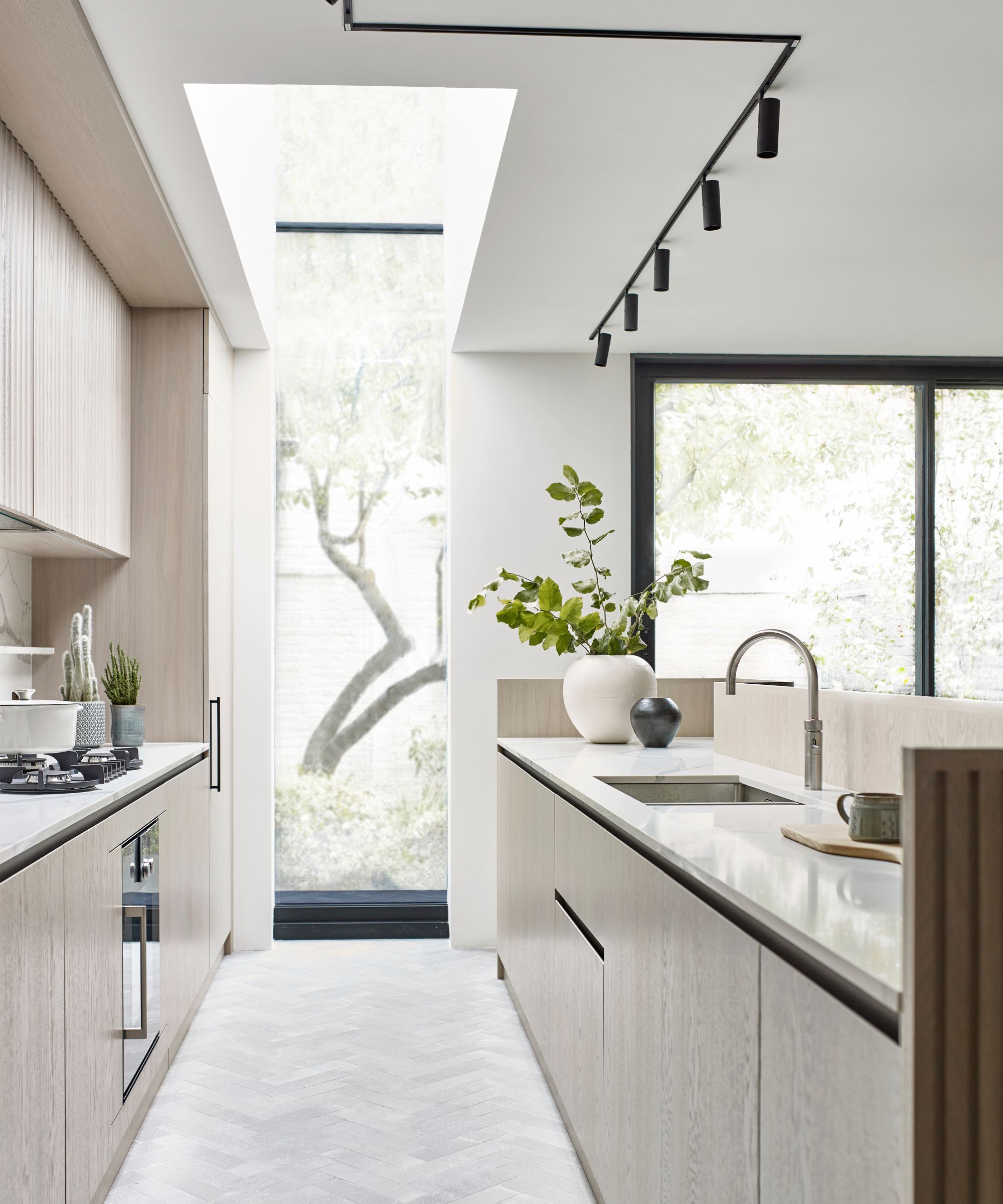
Next, you’ll need to consider task lighting to illuminate work surfaces and cooking areas. ‘I strongly recommend installing task lighting under your wall cabinets. This will cast a shadow-free light across the worktop below,’ advises Irene Gunter, founder of Gunter & Co.
Statement pendant lamps hung over kitchen islands or dining tables are a wonderful way to illuminate surfaces while also providing a decorative feature. ‘It’s crucial to consider the height of pendant lamps above a kitchen island – sightlines should always be clear to prevent glare. We tend to position pendants at least 75cm from the top of the work surface,' adds Irene.
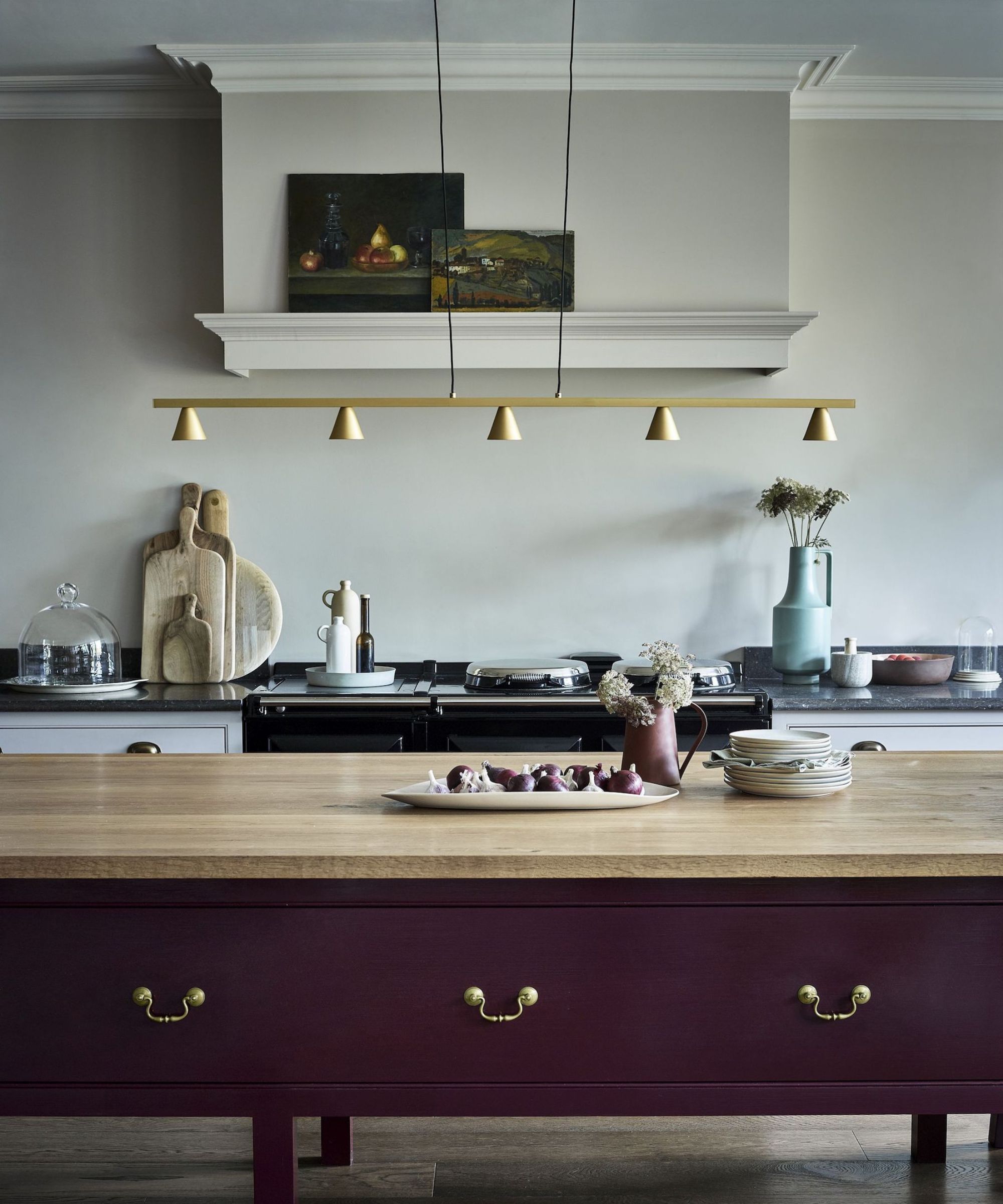
‘For the kitchen, avoid relying totally on recessed spotlights and instead use pendant lights, table lamps, and wall lights to create ‘zones’ in the kitchen. Pendants hung over a kitchen island or bar makes all the difference to a beautiful kitchen,’ says Rohan Blacker, CEO of Pooky Lighting.
‘If you have a kitchen diner, base your lighting around the table rather than the room itself. A chandelier or low-hung pendant over a round table, or a trio of small pendants over a long table, make a fabulous focal point. Then build up layers in the rest of the room with smaller wall lights or table lamps, allowing you to create moods, from brightly-lit family Sunday lunches to intimate dinners for two.’
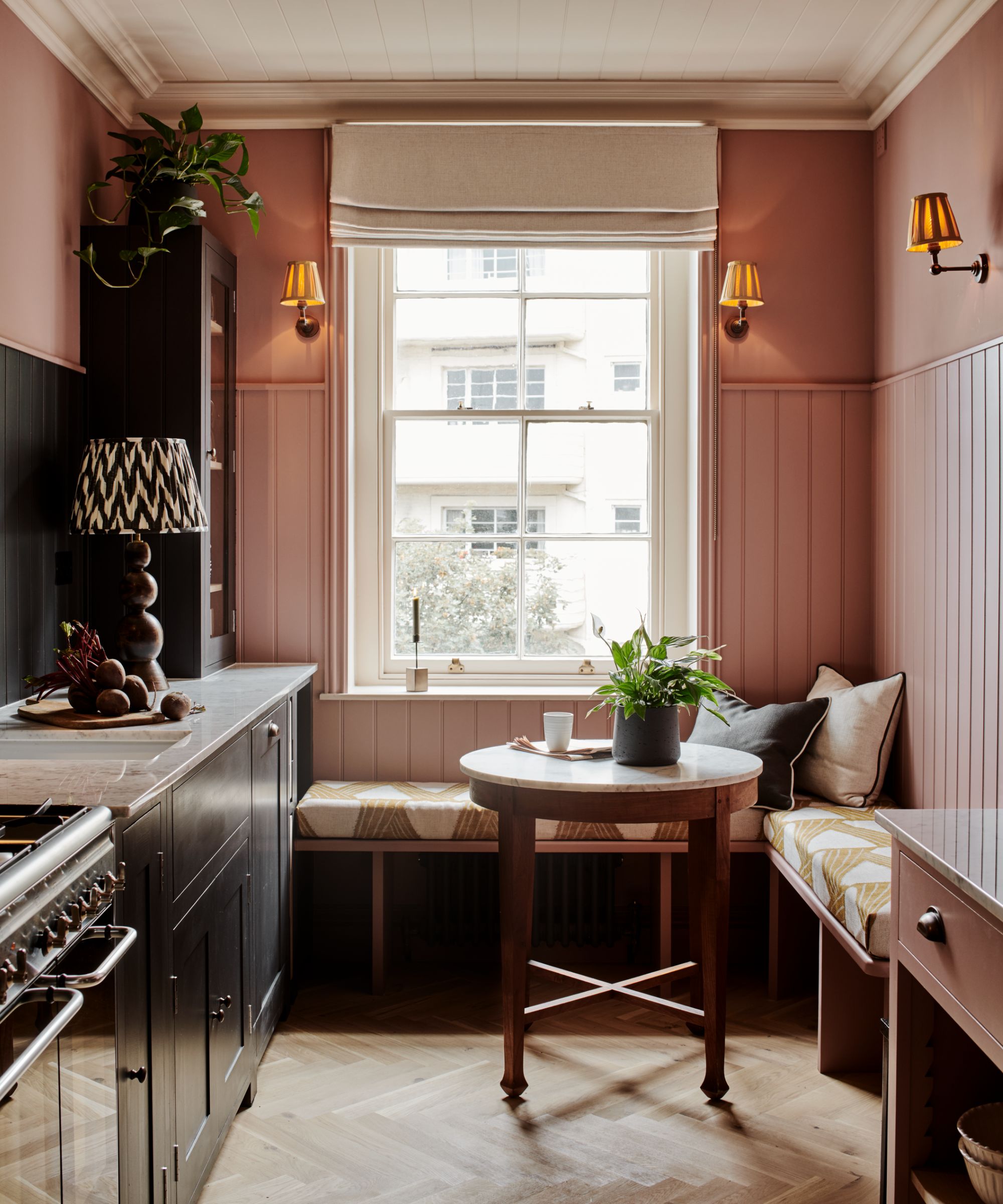
Incorporating accent lighting in the form of kitchen wall lighting and cabinet lights is another great way to elevate kitchen lighting. Increasingly wall cabinets with solid doors are being replaced with open shelves or glazed cabinets which gives scope to embrace accent lighting. Incorporating LED strip lights or spotlights along the back of shelves or inside glazed cabinets highlights the contents yet also adds to the overall welcoming ambiance of a room.
'Glazed kitchen cabinets can be a great way of showcasing some of your personal possessions. However, to really shine a spotlight on them (excuse the pun!), then be sure to have some form of lighting inside your cabinet,' says Richard Davonport, director of Davonport. 'It could be that you choose a spotlight that is embedded into the top of your cabinet, or if you have several shelves, choose LED strip lighting under each shelf.'
How to layer lighting in a living room
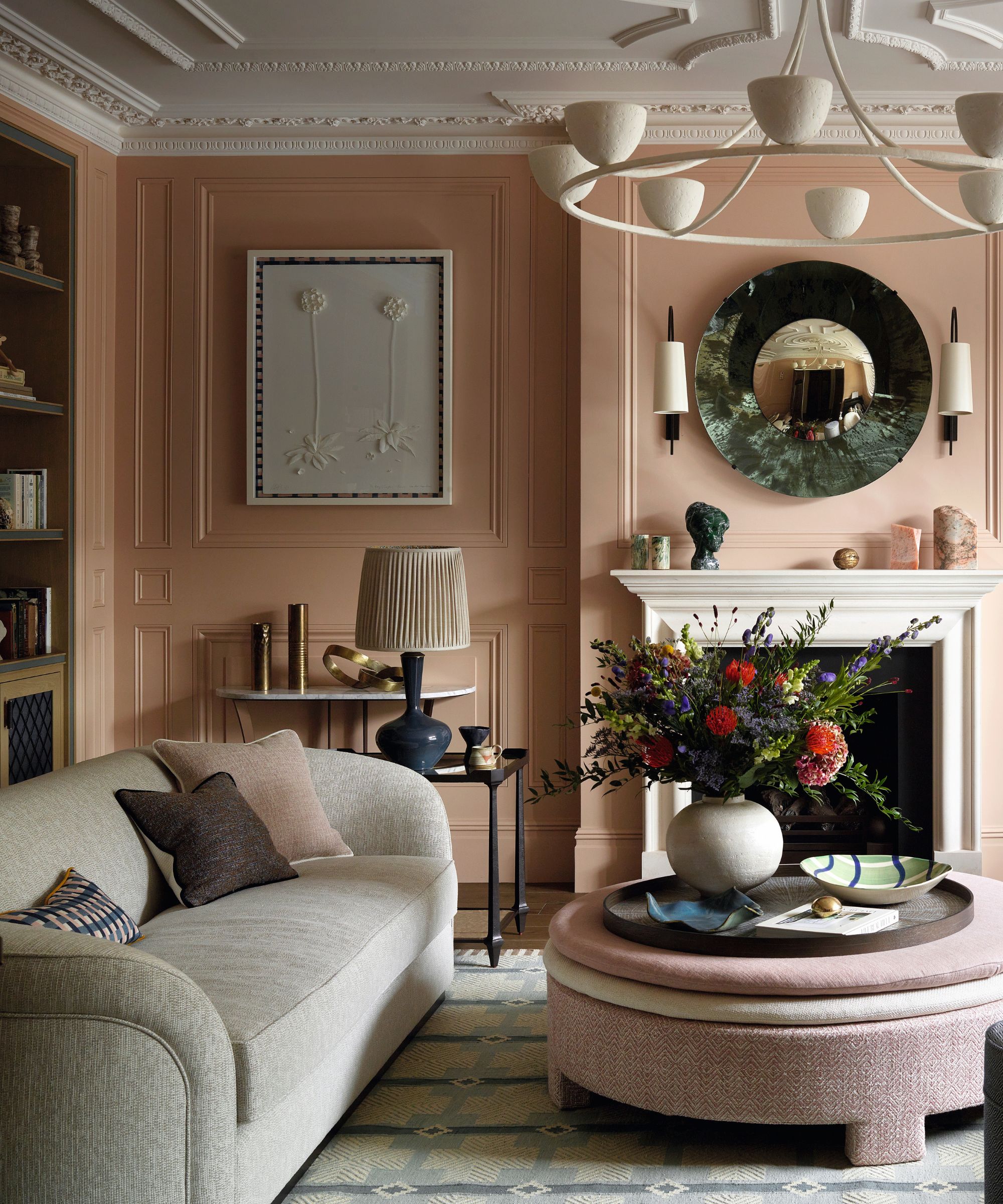
What types of lighting you choose for a living room will essentially depend on how you plan to use the space. Starting with the ambient lighting is always useful. If you have high ceilings you may wish to showcase a statement chandelier.
'Begin with appropriate ceiling fixtures: statement pieces for high ceilings, flush mounts for standard heights,’ says Laura Hammett, founder of Laura Hammett Interiors. Whatever ambient light source you choose it’s essential to always layer bedroom ceiling lights with additional light sources to create multiple moods.
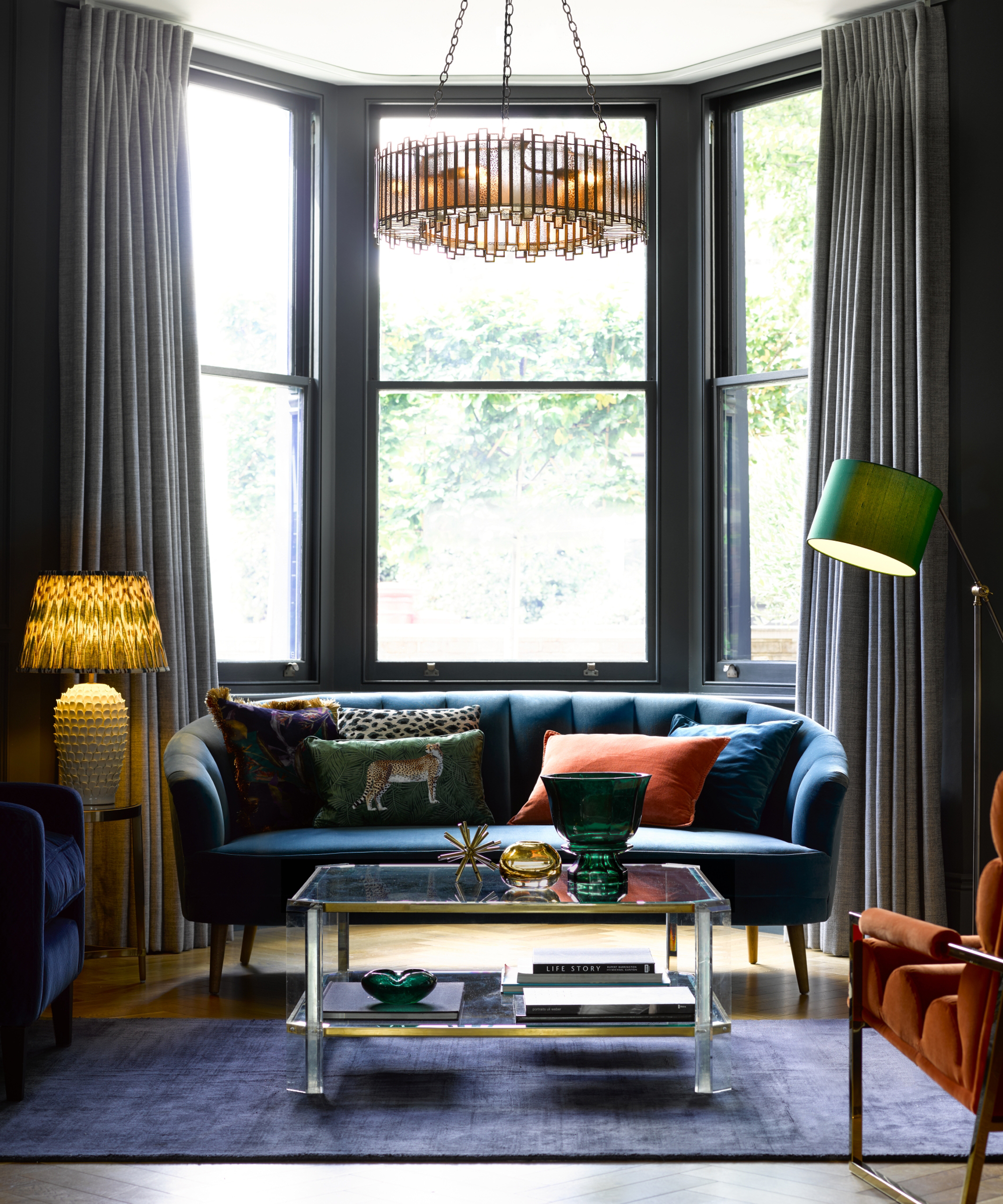
‘The key thing in a living room is to avoid the big light. By this, we mean not relying on the single overhead light in the center of the room. It makes for a flat, stark, and uninviting space. Instead, try adding a lamp on a side table next to the sofa or perhaps create a reading nook with a floor lamp,’ says Rohan Blacker.
‘Combine these with wall sconces for a soft glow around the room and picture lights to gently illuminate artwork. And why stop at having the lighting around the edge of a room? With the latest rechargeables, you can place a soft, glowing light on your coffee table or footstool, or perhaps on your bookshelf.’
Living rooms are also places where we often display artwork and collectibles. To highlight these after dark, fit picture lights and illuminate shelves with strip lighting.
How to layer lighting in a bedroom
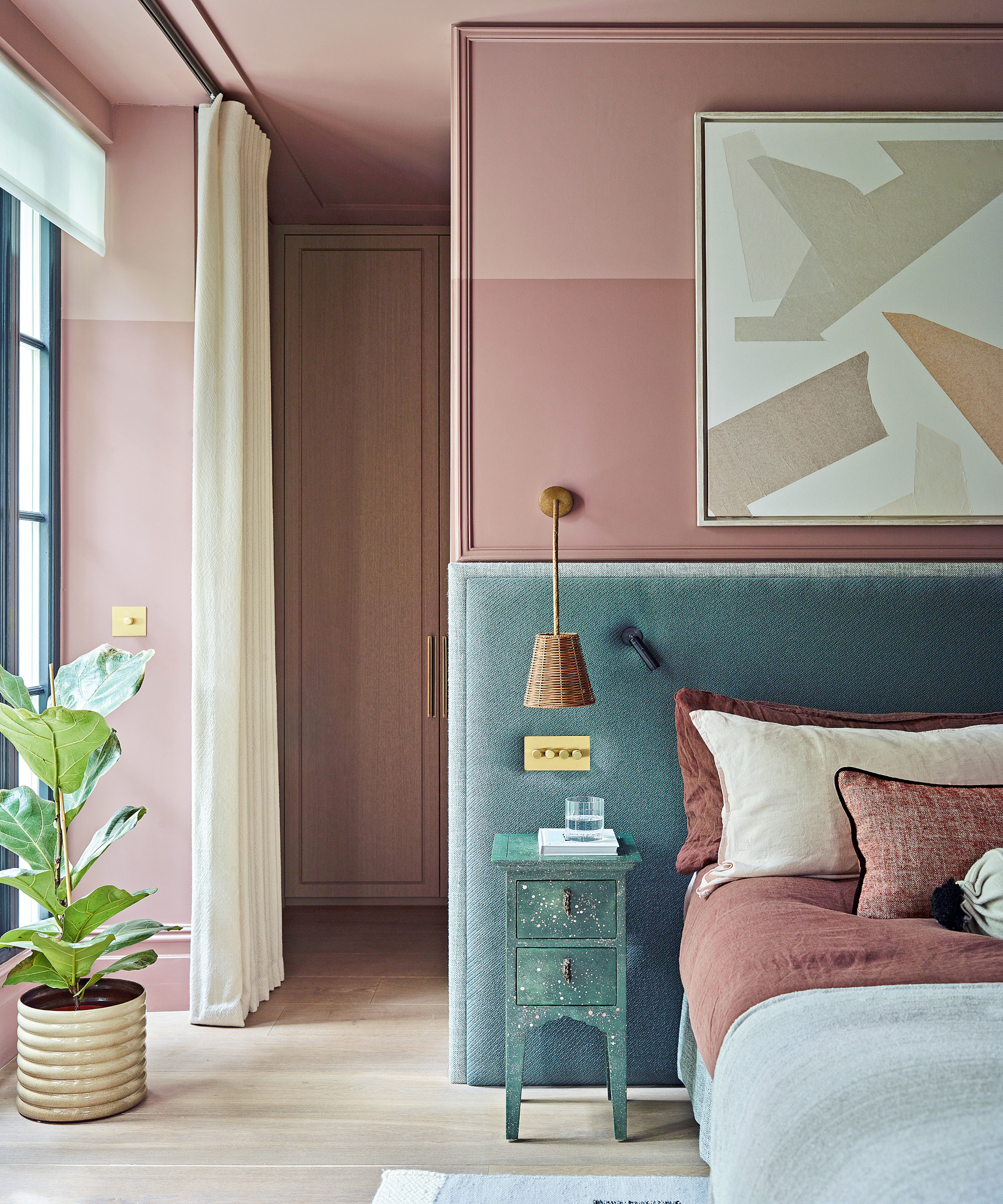
As spaces designed for relaxation, bedrooms require lower levels of ambient light. However, the room does fulfill other functions, so it’s important to think about how you will use the room from the outset as this will determine what additional lights you need and where to put them. For example, you may want a reading light positioned next to the bed – this could be fitted into the wall or could consist of a hanging light from the ceiling, it could even be wired into a headboard. These can then be supplemented by table lamps for a warm glow.
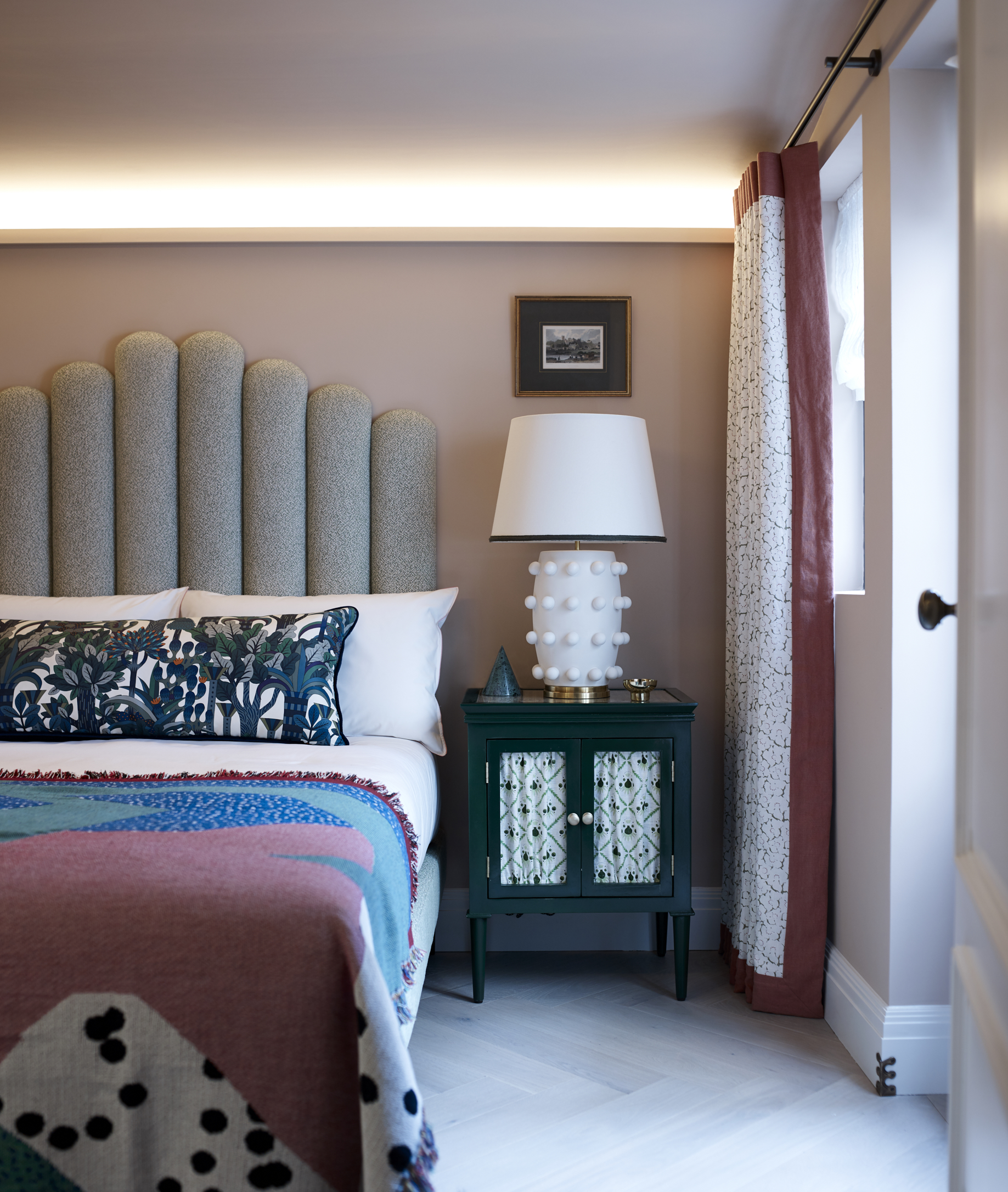
As with living rooms, start by thinking about overhead bedroom lighting and then consider layering from there. Tall ceilings are great places to showcase a chandelier, alternatively try flush mount bedroom ceiling lights for lower ceilings. Where ceiling lights are not an option, sometimes strip lighting around the top of the room can be used – this is a great way to make ceilings appear taller as demonstrated in this project by Gunter & Co.
‘Linear LED lighting hidden behind an Orac Decor profile washes the vaulted ceiling. This gives more sense of ceiling height than spotlights shining down, which wasn't an option here as the ceilings were made from solid brickwork,’ explains Irene.
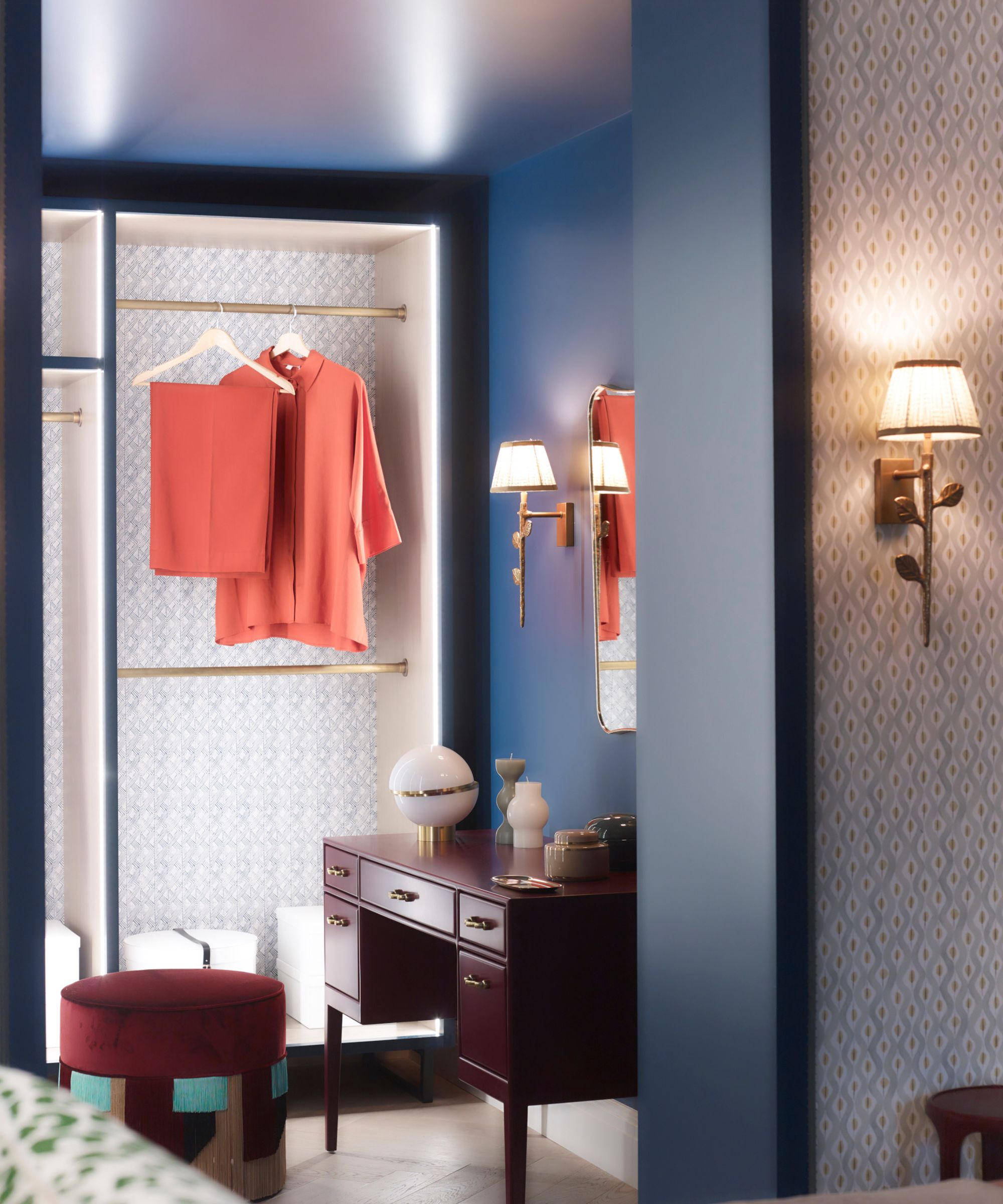
If your bedroom contains a dressing area and a dressing table where you plan to apply makeup up then this too will need lighting. ‘To prevent harsh shadows falling on the face avoid lighting a make-up area from above – instead, consider a mirror with integrated LED lighting which distributes a softer light as this will be more flattering. Alternatively, for a more decorative look, you could fit wall lamps bedside the dressing table,’ advises Irene.
If you have or are planning to include built-in wardrobes then consider factoring in wardrobe lighting to help you find what you are looking for whilst also adding to the general mood of the room. ‘We like to include a vertical lighting strip along both sides of each section of the wardrobe, always check the light level of the LEDs to prevent them from dazzling.’
How to layer lighting in a bathroom
When planning bathroom lighting, having good ambient and task lighting is important, especially over areas like a shower enclosure and by the sink, but it shouldn't stop there. Having additional types of bathroom lighting that allow you to alter the mood of the space is what really elevates a bathroom and gives it that spa-like feel. While bright light might be all you need to get ready in the morning, having softer light in the evening helps transform a bathroom into a relaxing sanctuary where you can unwind in the evening after a long day.
'Start with overhead lights to deliver a sense of overall brightness when required, LED recessed lighting or a ceiling fixture are good options and can then be layered at eye level with wall lights or vanity lighting to reduce shadows,' says Felix Milns of Hux London.
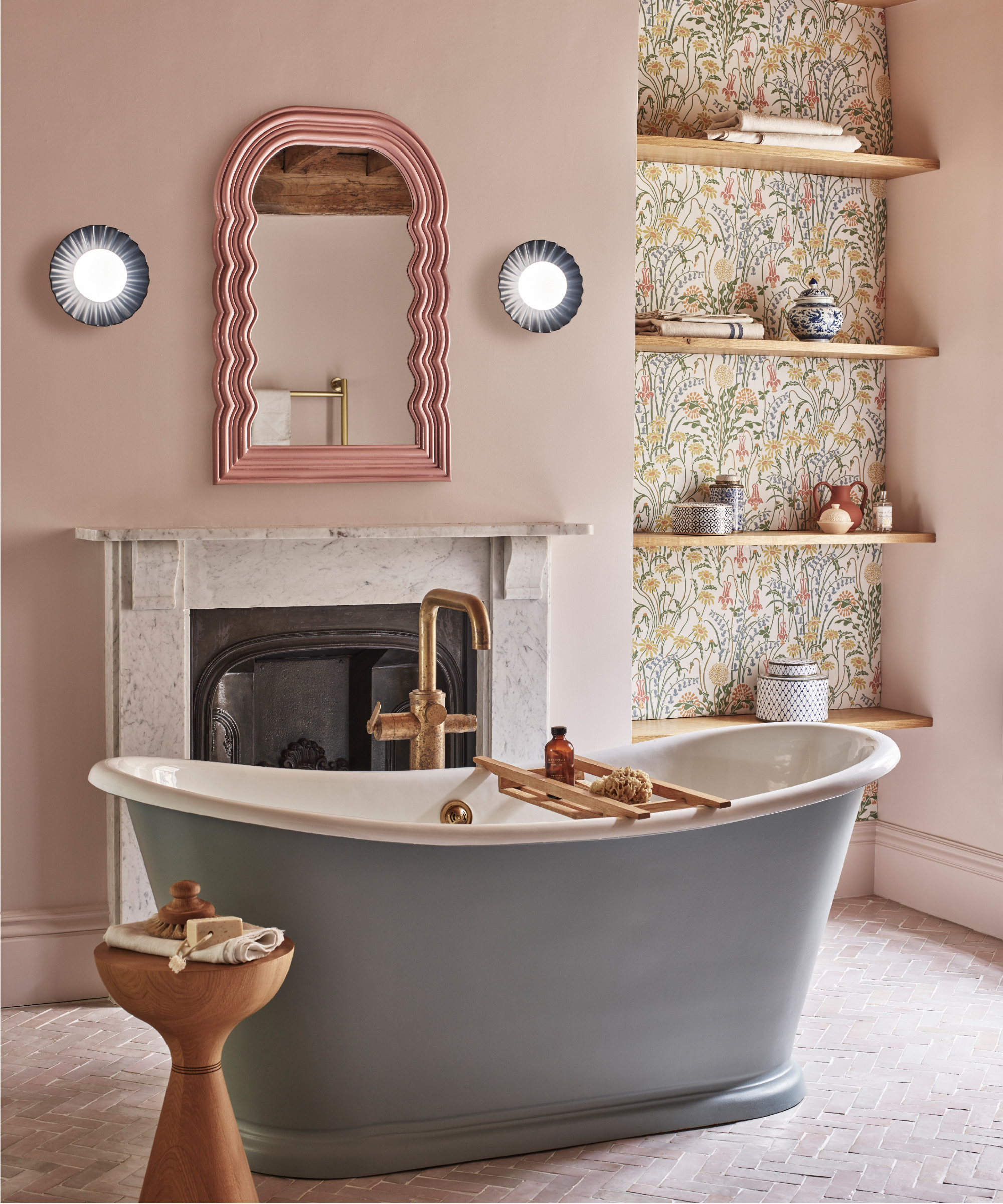
As small, functional spaces with lots of hard surfaces it can be tricky knowing how to add character to bathrooms – adding in decorative wall lights is a great solution. Installing wall lights on either side of a mirror adds task lighting, but they also double as a decorative feature. Alternatively, if space is tight, try a mirror with integrated LED lighting.
'I love having wall lights on either side of the mirror in my bathroom, as they create a softer layer of light and the correct balance for the face. I like opal and opaque glass finishes, which look sophisticated and are softer and cleaner in light distribution, or for a vibrant touch of color try our ‘Pop’ design,' Felix explains.
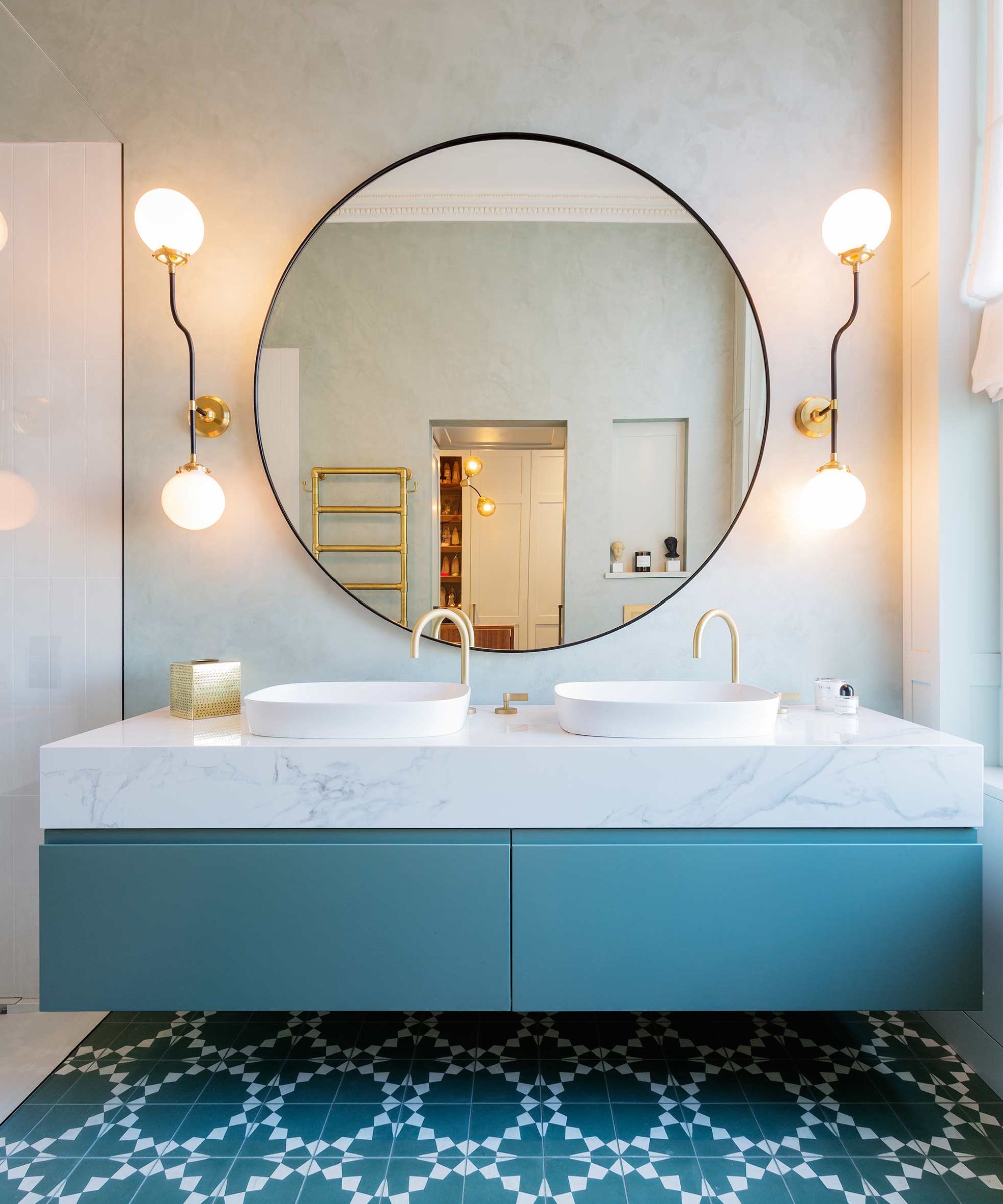
Highlighting alcoves or architecture features with strip lighting can also add to a relaxing mood, whether it’s inside alcoves or fitted under a floating vanity.
However, you can't just choose any light fittings for a bathroom, you need to take care to select lighting specifically designed for a bathroom as there are strict safety regulations about the fittings that can be used. Luckily there are lots of companies that offer beautiful bathroom-friendly fittings to add that decorative touch.
6 tips on how to layer lighting in every room
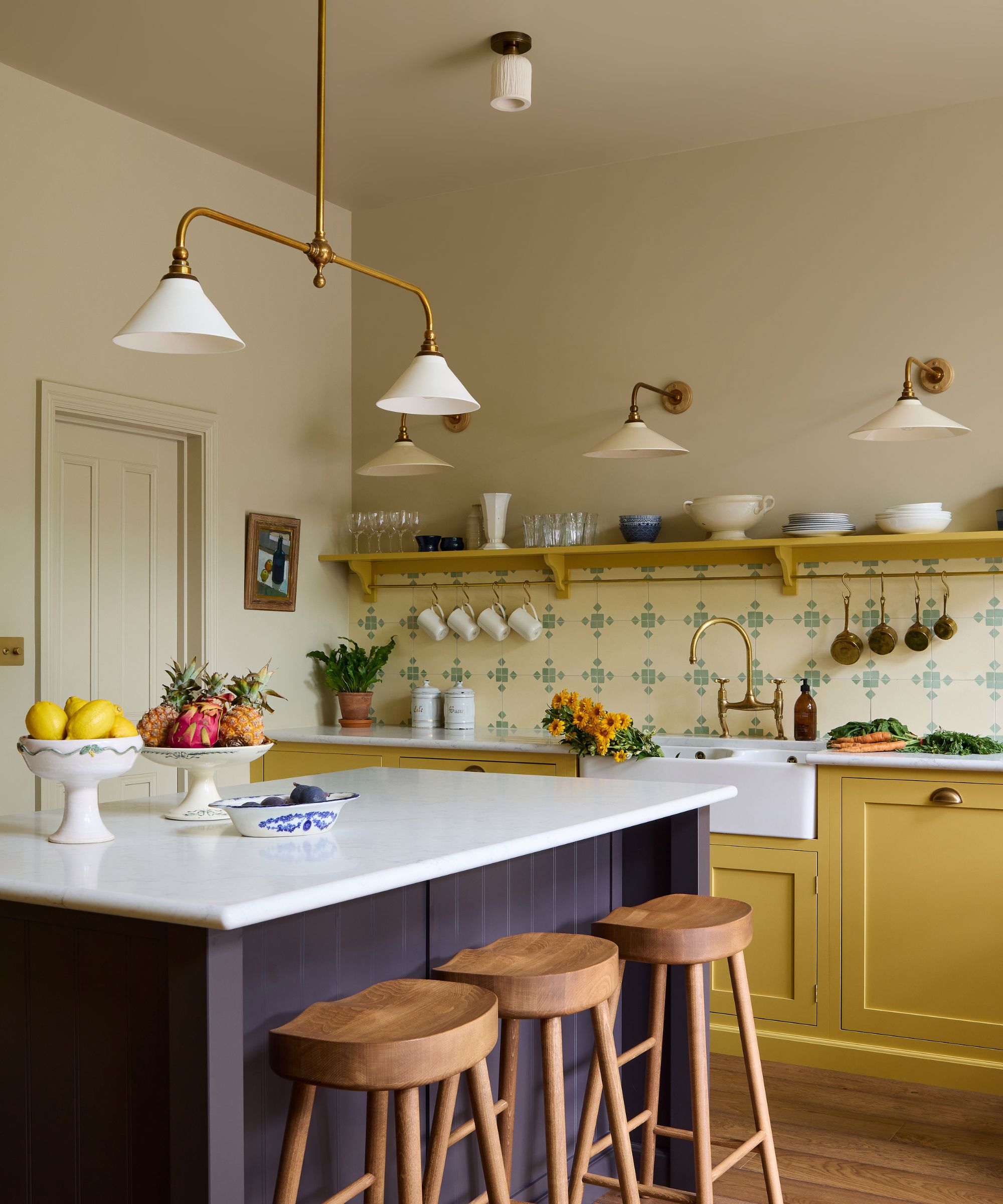
So now we have broken it down room by room, there are also some general ways you can perfect a soft, layered light scheme no matter what space you are decorating. Here's what designers recommend.
1. Wire lights on multiple circuits
In order to operate lights independently and alter the moods throughout the day many interior designers advise wiring layered lighting on electrical different circuits.
‘If possible, install your lighting on more than one electrical circuit and consider hardwiring outlets for lamps into your main switch panel too,’ advises Emma Deterding, founder of Kelling Designs. ‘Have one circuit for your main ceiling lights to add brightness and general lighting throughout the day, and a separate one for wall lights and lamps to bring in that warming glow for those cozy evenings.
The number of circuits will vary from two, three, or even more, depending on the size of the space and the lighting requirements. ‘In a kitchen, a good rule of thumb is to have three circuits: one for general downlights, another for pendant lights, and a final circuit lighting such as shelf or alcove lighting. If your kitchen is particularly large, you may need additional circuits,’ explains Irene Gunter.
2. Fit dimmer switches
Fitting dimmers to lighting allows you to easily alter the mood within a room at the turn of a dial. Lighting can be switched from full bright light for carrying out tasks to low-level, gentle light perfect for a relaxed and cozy feel.
‘Use dimmers on all lights to provide you with flexibility. Dimmers allow you to transition the ambiance from a bright setting to a more relaxed, intimate atmosphere,' says Luke Thomas, design director of John Cullen Lighting.
3. Position lights at different levels
Lighting needs to look good off as well as on so it’s important to plan where lights sit in relation to each other. For a pleasing composition ensure lights are placed at different levels says Cintra Sedalik, Interior Designer at Herlong Architecture and Interiors. This is particularly important if you have a large open-plan living room with lots of light fittings.
‘I always like to consider the cadence and hierarchy of the light fixtures in relation to the spaces within the layout. If there are hanging light fixtures, they shouldn’t compete with one another but instead complement each other. I like to consider the sight lines of the whole room so that fixtures can visually layer each other without opposition.'
'The best way we do this is by laying out our lighting selections in elevation drawings. The lighting that is not making a statement, but playing a supporting role is equally important. I.e., can lights, cabinet lights, puck lights, LED tape lights, cove lighting, etc. The placement of these supporting lights help make the space more functional and/or ambient, so striking a balance of these supporting lights is also critical to creating a balanced lighting plan.'
4. Consider the warmth and brightness of your bulbs
It's not just the positioning and the type of fitting that need to be considered when planning lighting.
'Color temperature also plays a crucial role in setting the mood of a space,' explains Luke. 'Warmer colors (around 2200K-2700K) create a cozy and inviting atmosphere, making them ideal for residential and hospitality settings. Experiment with different color temperatures to find the perfect atmosphere for your space.'
5. Ditch standard spotlights
While spotlights recessed into the ceiling are a practical solution to the ambient lighting in some cases, increasingly interior designers seem to be moving away from the standard grid lighting in favor of alternative lighting methods and more decorative fittings.
'Many people often make the mistake of installing downlights or spotlights in a classic grid formation. This doesn’t always provide the level of lighting needed and can look messy, too,' says Irene Gunter. Instead, she prefers to be creative combining pendants and wall lighting.
'Ditch the standard spotlights and swap for various lighting sources that are functional and not one-dimensional. In this kitchen, we mixed task wall lights, picture lights, pendants, and flush ceiling lights together to add a layered feel,' agrees interior designer Uns Hobbs. 'To keep electrician costs down, we use existing spotlight points and replace them with these amazing flush ceiling lights. They are much softer than traditional spots and add so much interest.'
6. Try portable, rechargeable lights
Wireless lamps are a game changer in interior design because they can instantly bring warm pools of light to dark corners anywhere in a room without the need for sockets and messy wires. They’re particularly handy for properties where you can't make structural alterations such as rental properties.
'Combine rechargeable lights with wall sconces for a soft glow around the room and picture lights to gently illuminate artwork – again rechargeable options now mean you can add these in retrospectively without the expense of an electrician or rewiring,' says Rohan Blacker.
The key to layered lighting is to avoid relying on just one light source, but instead to factor in a variety of different styles to make the space work on multiple functions and moods. Rather than relying on just overhead spotlights, think about combining these with pendant lights, wall lights, floor lamps, and table lamps, along with strip lighting and strategically positioned accent lights. Combining a variety of different lights that can be operated separately allows you to make the most of your living spaces.
Sign up to the Homes & Gardens newsletter
Design expertise in your inbox – from inspiring decorating ideas and beautiful celebrity homes to practical gardening advice and shopping round-ups.

Pippa is a contributor to Homes & Gardens. A graduate of Art History and formerly Style Editor at Period Living, she is passionate about architecture, creating decorating content, interior styling and writing about craft and historic homes. She enjoys searching out beautiful images and the latest trends to share with the Homes & Gardens audience. A keen gardener, when she’s not writing, you’ll find her growing flowers on her yard for styling projects.
You must confirm your public display name before commenting
Please logout and then login again, you will then be prompted to enter your display name.
-
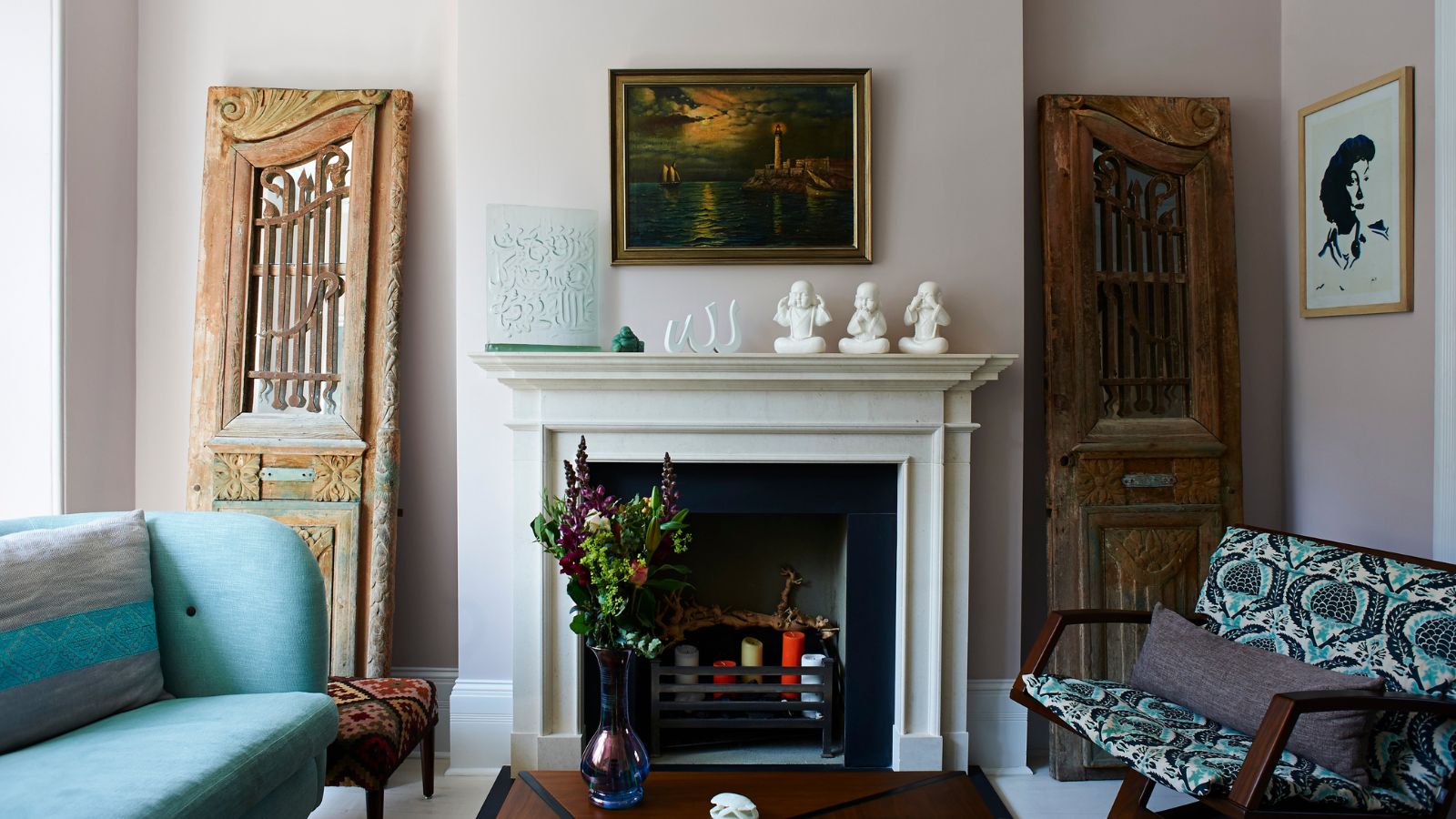 'It's a fast reset button' – using the 1, 2 ,3 ,4, 5 decluttering method cleared my persistent mess in seconds
'It's a fast reset button' – using the 1, 2 ,3 ,4, 5 decluttering method cleared my persistent mess in secondsIt's easy, effective and so quick to do
By Ottilie Blackhall Published
-
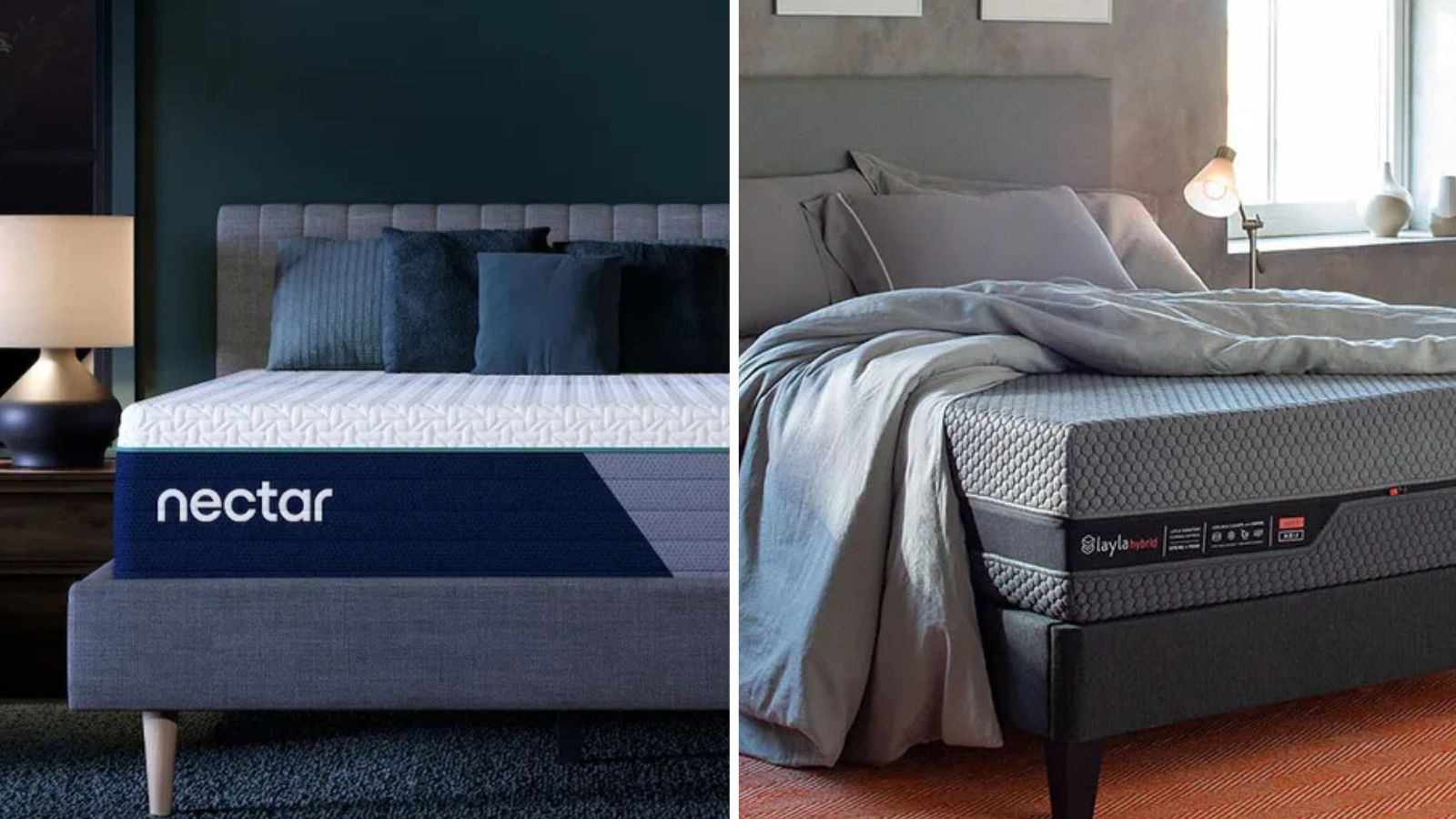 Nectar vs Layla – which mattress brand is best on test?
Nectar vs Layla – which mattress brand is best on test?I've set the Nectar Premier Hybrid Mattress and the Layla Hybrid Mattress head to head to help you work out which mattress meets your needs
By Emilia Hitching Published